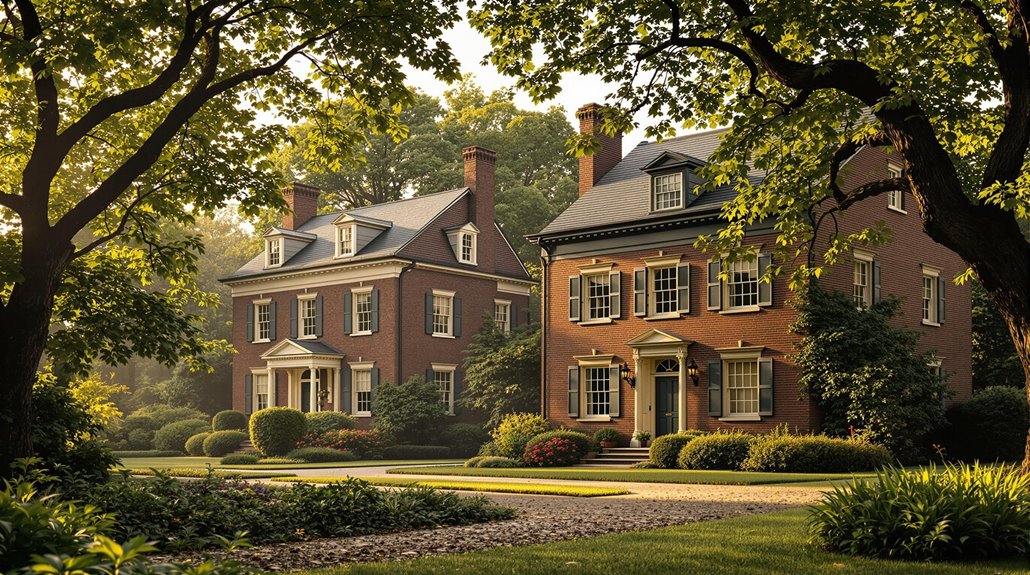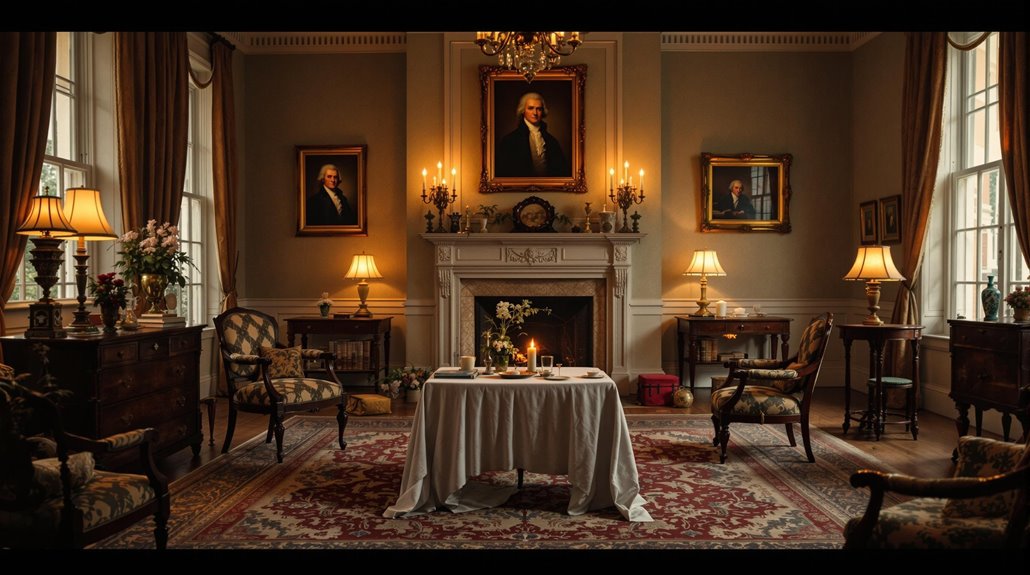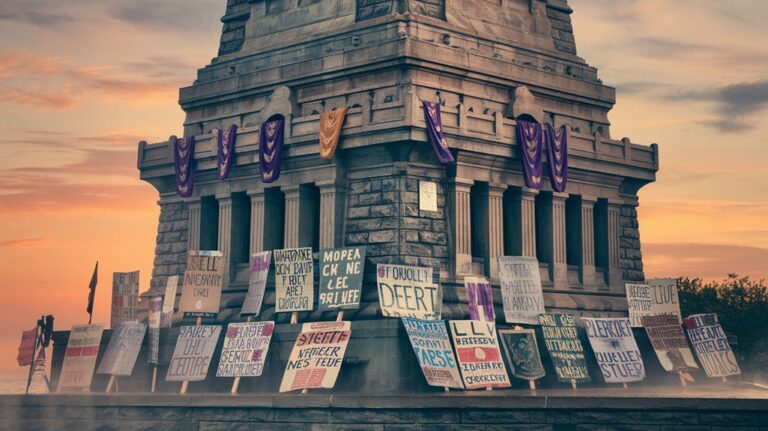Adams and Jefferson Both Died on July 4, 1826
You've probably heard about the Declaration of Independence and July 4th, but there's an even more extraordinary story that unfolded exactly 50 years later. On July 4, 1826, two of America's greatest founding fathers – John Adams and Thomas Jefferson – drew their final breaths on the same day. Their parallel deaths weren't just a coincidence; they represented the perfect bookend to a complex friendship that helped build our nation. Let's explore what made this moment so remarkable.
The Historic Friendship That Shaped America

While many founding fathers left their mark on American history, few relationships proved as complex and consequential as the friendship between John Adams and Thomas Jefferson.
Their political collaboration began at the 1775 Continental Congress, where they worked together to shape American ideals through the Declaration of Independence. You'll find their partnership deepened during their diplomatic relations in Europe, with Jefferson visiting Adams in London and fostering what Adams called an "amiable" connection.
Their lasting impact extends far beyond their initial cooperation. Though their friendship would later face severe tests during their political rivalry, their eventual reconciliation and extensive correspondence provided invaluable insights into America's founding principles. They both passed away on the 50th anniversary of independence, making their shared date of death even more significant. Adams, in his final moments, uttered the poignant words "Thomas Jefferson survives" unaware that his friend had died hours earlier.
They exchanged 158 letters discussing philosophy, politics, and their shared legacy, demonstrating how personal bonds could transcend political differences.
A Nation's Golden Anniversary
The fiftieth anniversary of American independence in 1826 marked a momentous celebration across the young nation.
You'd have witnessed grand parades, illuminated cities, and patriotic festivities that captured the national pride sweeping from coast to coast. In Washington D.C., a thousand guests attended an elegant ball, while commemorative coins marked this historic milestone.
This period of historical reflection showcased America's remarkable growth – from 2.5 to 11 million citizens, and from 13 to 24 states.
You'd have heard President John Quincy Adams speak at the Capitol and Daniel Webster deliver his famous Boston oration. They highlighted the nation's achievements in technology, trade, and democracy.
While the invited Lafayette couldn't attend due to illness, special toasts honored George Washington's memory and celebrated America's transformation from colonial outpost to rising power.
Their Final Hours and Last Words
As America celebrated its golden jubilee, both Jefferson and Adams approached their final hours in markedly different circumstances.
Jefferson's health had declined since June 24, and he drifted in and out of consciousness, repeatedly asking "Is it the Fourth?" In his final moments, he refused pain medication before passing shortly after noon on July 4.
Adams, though more robust until recently, collapsed into unconsciousness that same day. In his last reflections around 5:30 PM, he whispered what witnesses believed to be "Thomas Jefferson survives" – unaware his fellow founder had died hours earlier. The two men had maintained their deep written correspondence throughout their retirement years.
While Jefferson's last words went unrecorded before his simple burial at Monticello, Adams' final utterance remains a poignant reminder of their enduring connection, even as both passed away on the nation's 50th anniversary. Around 1,500 mourners joined the funeral procession to pay their final respects to Jefferson at Monticello.
Divine Providence or Remarkable Coincidence
News of these remarkable deaths sparked immediate debate about whether divine intervention or pure chance had orchestrated such a momentous coincidence.
Many prominent figures, including John Quincy Adams and Daniel Webster, saw it as clear evidence of divine providence, viewing the timing as proof that America's founders were under God's special care.
The statistical odds were striking – both men dying on the same day (1 in 365), let alone on July 4th's 50th anniversary, hundreds of miles apart.
While skeptics pointed out that both men were elderly and ill, making the timing more plausible, the historical significance deepened when James Monroe also died on July 4th in 1831.
This pattern of three early presidents dying on Independence Day further fueled beliefs that these deaths transcended mere coincidence.
Their deaths marked the end of what historians consider the founding generation's era, concluding a remarkable chapter in American leadership.
Jefferson, who had devoted his life to championing religious freedom through his writings and legislation, left behind a legacy that extended far beyond his death date.
The End of the Revolutionary Era

With Jefferson and Adams's deaths in 1826, America lost its last direct links to the Revolutionary generation that had secured independence nearly half a century earlier.
Their leadership had begun in the earliest days when Lord North and George III believed war was inevitable by the end of 1774.
Both men had been instrumental in shaping a new nation that emerged after the Treaty of Paris granted expansive territory to the United States in 1783.
You can trace their revolutionary legacy from the 1783 Treaty of Paris through the nation's remarkable political evolution. They'd witnessed America evolve from thirteen colonies to a unified nation, overcoming significant post-war challenges under the Articles of Confederation.
They'd helped shape the Constitutional Convention that created a stronger federal government, and they'd seen the ratification of the Bill of Rights that enshrined fundamental liberties.










